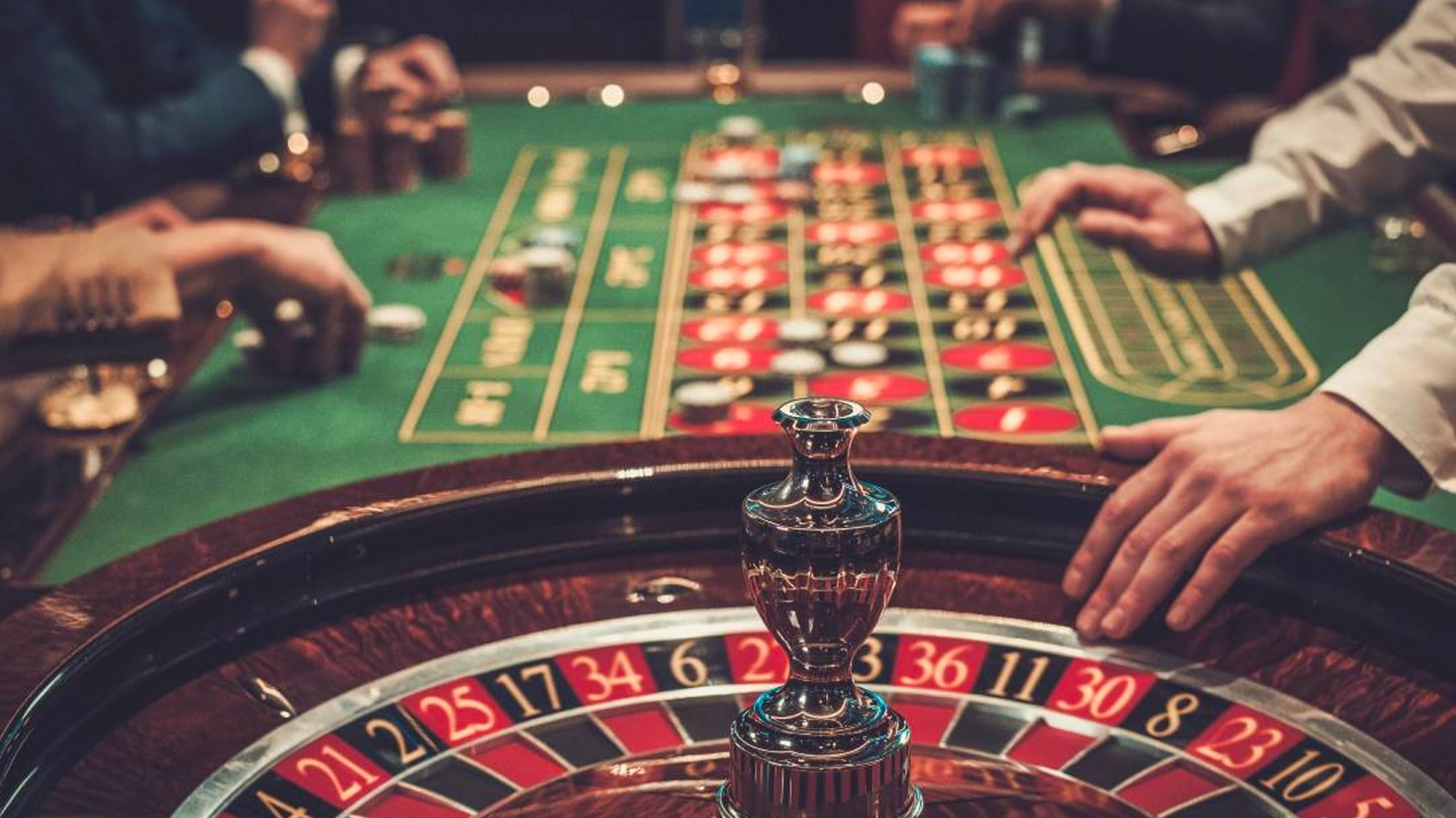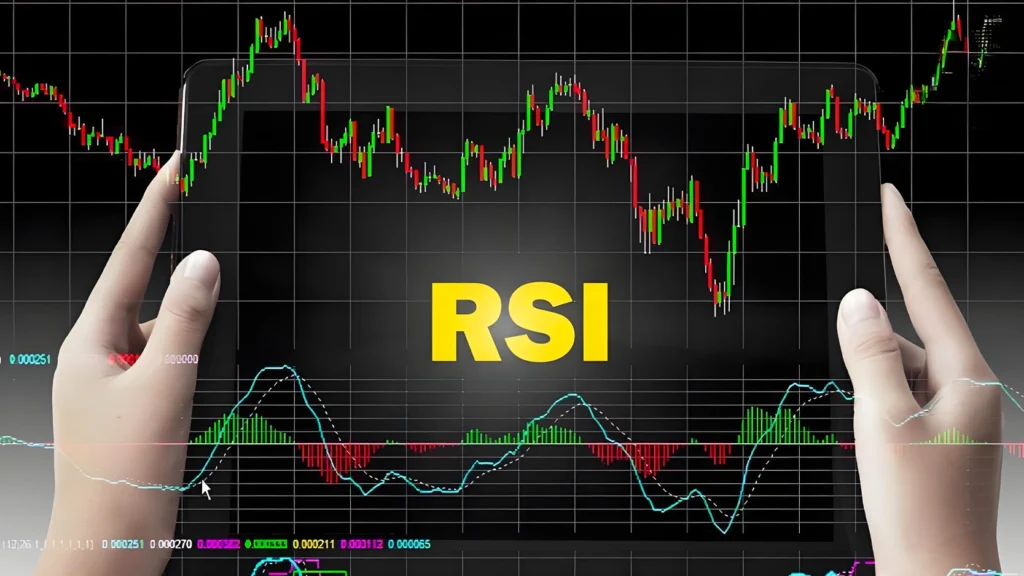What Is the Martingale Strategy? Is It a Winning Mathematical Magic Trick, or a Dream That Will Eventually Come Crashing Down?
In the vast world of financial trading, there are concepts as captivating and controversial as ancient legends, and the Martingale Strategy is undoubtedly one of the most intriguing chapters. It offers traders an alluring promise: no matter how many losses occur, a single win can recover all prior losses and secure the originally targeted profit. This seemingly simple logic, which appears capable of taming market randomness, resonates deeply with the human instinct to seek order and control amid uncertainty. As a result, it has endured for centuries, continuously drawing generation after generation of market participants.
However, any so-called “holy grail” that seems to easily conquer the market deserves the most careful scrutiny. This instructional guide aims to provide a comprehensive, objective, and in-depth descriptive exploration, guiding traders beyond a superficial understanding of the Martingale Strategy. Together, we will trace its origins through the course of history, delve into the theoretical foundations and real-world gaps in its mathematical model, analyze its profound impact on traders’ psychological state, and examine its varying applications and potential pitfalls across different financial markets.
Where Did the Martingale Strategy Originate?
The roots of the Martingale Strategy do not lie in the modern, computer-driven trading floors, but trace back to the casinos and salons of 18th-century France. At the time, it was commonly applied to games of chance with nearly even probabilities such as red/black bets in roulette or heads/tails coin tosses. The origin of its name is subject to debate. One theory links it to John Henry Martindale, a 19th-century British casino owner who was a strong advocate of the method. Another more ironic explanation suggests that the word “martingale” comes from the Provençal phrase “jougaalamartegalo”, meaning “to play in a ridiculous and baffling way”.
Regardless of its etymology, the core idea of the Martingale Strategy is remarkably straightforward. By the 20th century, this casino-born strategy had attracted the attention of the mathematical community. French mathematician Paul Pierre Lévy, American mathematician Joseph Leo Doob and more incorporated it into the framework of probability theory for rigorous study. Interestingly, their primary motivation at the time was to mathematically prove that in a purely probabilistic game, no betting system could guarantee a 100% profit which is an important historical context for understanding the inherent limitations of the strategy.
To truly grasp the allure of the Martingale Strategy, we must experience its mechanics through a concrete example. Imagine a trader who decides to adopt this strategy, setting a fixed initial position size of $100. Unfortunately, his first trade ends in a loss. At this point, following the core principle of Martingale, he does not retreat; instead, he decisively doubles the position size of his next trade to $200. If the market turns against him again and the second trade also results in a loss, he will continue to double his stake to $400. This process of exponential growth continues until a winning trade occurs. Suppose that in the third trade where he has staked $400, the market finally moves in his favor and he secures a win. This victory not only generates a profit, but fully recoups the prior $300 in total losses ($100 + $200) and also delivers an additional profit equal to his original position size of $100.
This process perfectly illustrates the primary goal of the strategy: to fully recover all losses and secure a small, fixed profit on that basis. The simplicity of this mechanism, combined with the certainty of its promised outcome, forms the irresistible appeal of the Martingale Strategy which makes it seem like a mathematical magic trick capable of cracking the market’s code at first glance .
Why Is There a Huge Gap Between Martingale Theory and Reality?
The theoretical model of the Martingale Strategy is built on what appears to be a flawless logical loop. However, when this model moves from pure mathematical theory into the real trading world that is full of frictions and constraints, a vast gap emerges. The root of this gap lies in the cognitive biases the strategy relies on, as well as its idealized assumptions about real-world conditions.
First, this strategy exploits a psychological bias known as the “gambler’s fallacy“. This is a common but mistaken belief that a series of independent random events will influence one another. For example, after seeing black appear several times in a row, a gambler might feel that the next spin is “due” to land on red. In trading, this manifests after suffering a series of losses, a trader subjectively believes that the probability of winning the next trade has increased because the market “owes” them a win. This mindset traps traders in an illusion of control, leading them to believe that by systematically doubling their position size, they are mastering what is essentially a random process.
Second, the theoretical validity of the Martingale strategy rests entirely on two extreme and unrealistic assumptions: unlimited capital and unrestricted trade size. In reality, every trader’s capital is finite. The exponential growth of position size (for example, from $100 to $200, then to $400, $800, $1,600, $3,200…) means that even a relatively short losing streak can quickly deplete most trading accounts, leaving the trader unable to continue before that “inevitable” win arrives. More importantly, almost all brokers and exchanges impose position size or trading limits. This external constraint will forcibly break the doubling sequence—often even before the trader’s funds are exhausted.
Finally, and most critically, lies the reality of negative expectancy. In any real financial market, trading involves costs such as spreads, commissions, and potential negative slippage. These costs mean that even in a theoretically 50-50 market, the mathematical expectancy of any single trade is in fact slightly negative. No betting strategy can alter this fundamental mathematical reality including Martingale. It cannot turn a game with a long-term negative expectancy into one with a positive expectancy. All it does is reshape the risk and the structure of reward: turning what would otherwise be symmetric small wins and small losses into frequent, negligible gains punctuated by a rare but catastrophic loss that wipes out everything.
According to the relevant mathematical derivation, the expected return of a Martingale cycle is given by the formula E(G) = 1 − 2 to the power of n × p to the power of n (where p is the probability of a single loss and n is the maximum number of consecutive losses). Under real market conditions, this value is always negative, mathematically confirming the inevitability of long-term losses. This means the strategy is not a profit-generating tool, but rather a risk-restructuring mechanism which exchanges frequent small wins that seems steady for an extremely asymmetric tail risk capable of wiping out the account. In this process, traders often overlook the erosive effect of trading costs. While using financial trading rebate services like those offered by CashbackIsland can offset some of these overlooked costs to a certain extent, it does not change the fundamental risks inherent in the strategy itself.
How Does the Martingale Strategy Affect Psychological State?
If the mathematical flaws are the Martingale strategy’s “original sin”, then its erosion of a trader’s psychological state is the “inner demon” that drives them toward disaster. The mechanism of this strategy seems tailor-made for human psychological weaknesses, leading traders through a violent and highly destructive emotional roller coaster.
This psychological journey often begins with the “thrill of the chase”. In the early stages of the strategy, doubling down after a loss and swiftly recouping the deficit with a single win brings an intense sense of excitement and satisfaction. The dopamine released in the brain generates pleasure and a sense of reward, reinforcing trust in the system. However, as consecutive losses occur, the journey quickly shifts to “escalating pressure”. The exponential growth of position size means each new trade carries unprecedented financial strain. Fear of massive potential losses begins to grow while anxiety, stress, and panic follow, causing the trader’s decisions to become increasingly driven by emotion.
If unfortunate enough to suffer continued losses, the trader slips into the “abyss of despair”. At this point, the hope of breaking even becomes faint, and the strategy itself transforms from a tool of hope into a “financial black hole” that relentlessly devours capital. Under such extreme pressure, traders are highly prone to making irrational, all-or-nothing decisions. The most dangerous part of this roller coaster lies in the feeling when victory finally arrives. When a single win ends the losing streak, the trader experiences not just joy, but an overwhelming “euphoria of recovery”. This powerful sense of release from immense pressure acts as a strong form of positive reinforcement, leading the trader to credit the win to the strategy’s effectiveness, while completely overlooking the massive risks endured in the process. This in turn solidifies their resolve to keep using the strategy, laying the groundwork for the next cycle that is even more dangerous.
A more insidious danger lies in the fact that any short-term success achieved through the Martingale strategy can easily breed deadly false confidence. Traders may mistake sheer luck for exceptional skill, believing they have mastered a foolproof system. This is often worse than losing from the start, as it encourages traders to go further down a fundamentally unsustainable path. Over time, they may become desensitized to risk, with the initial small bets no longer providing sufficient psychological stimulation, prompting them to unconsciously raise their starting position size and thereby greatly accelerating the path to ruin. In such a high-pressure, emotionally charged trading environment, maintaining discipline and objectivity becomes critical. Traders must rely on objective data and analytical tools to counteract the fear and greed within.
Ultimately, the Martingale strategy is a self-perpetuating psychological trap which creates pressure through losses, then uses the euphoria of victory to validate the system that generated that pressure, forming a vicious cycle driven by a combination of cognitive bias and emotional response.
How Does the Application of the Martingale Strategy Differ Across Markets?
The Martingale strategy is not a one-size-fits-all universal model. Its risk profile and suitability vary significantly across different financial markets. At the core of this difference lies on the fact that the strategy’s success or failure depends far more on the underlying structure and behavioral characteristics of the market in which it is applied, rather than on any inherent safety within the strategy itself.
Forex Market
The forex market is one of the most popular arenas for applying the Martingale strategy, mainly for two reasons. First, the currencies of major countries rarely fall to zero in value. Unlike company stocks that may face bankruptcy and liquidation, sovereign currencies have intrinsic value that provides traders with a psychological safety cushion. Second, the forex market offers the possibility of “positive carry trades”. Savvy traders can go long on a currency pair where the base currency has a higher interest rate than the quoted currency, so that even if the position is in a floating loss, the daily interest earned can partially offset the loss. However, this does not mean the strategy is risk-free. Highly volatile currency pairs, or those prone to long-term one-way trends, can still pose a fatal threat to Martingale trades. Overall, the ideal application environment for this strategy in the forex market is a low-volatility, range-bound market where prices oscillate within a well-defined channel.
Stock Market
Directly applying the Martingale strategy to individual stocks is generally considered riskier than using it in the forex market. The core risk lies in the fact that any company can go bankrupt due to poor management, industry shifts, or black swan events, and its stock value can indeed fall to zero. In such extreme cases, no matter how the strategy is designed, the investment will be completely wiped out. In the stock market, the strategy is often adapted into a “cost averaging” variant, where investors continue buying as the stock price falls to lower the average holding cost. However, if the company’s fundamentals are deteriorating, this behavior is essentially “throwing good money after bad” and only magnifies the eventual loss. In addition, trading costs such as commissions and taxes must be carefully factored into the equation.
Cryptocurrency Market
If using the Martingale strategy in the forex market is considered high-risk, then applying it in the cryptocurrency market is akin to performing the ultimate high-wire act without a safety net. This market is notorious for its extreme volatility, with price swings of dozens of percentage points within short timeframes being commonplace, this kind of movements are powerful enough to wipe out any position attempting to recoup losses through doubling. In addition, the limited liquidity of certain cryptocurrencies can cause severe slippage, while the overall lack of unified regulation, susceptibility to “bubble” sentiment, and the real possibility of some tokens collapsing in value all make the Martingale strategy’s core assumption of “market will eventually reverse” became exceptionally fragile.
Commodities Market
In the commodities market, the Martingale strategy faces similar challenges. While the likelihood of major commodities such as gold or crude oil falling to zero is extremely low, their price movements are heavily influenced by global macroeconomic conditions, supply and demand dynamics, and geopolitical events which are factors that can easily produce long-lasting, powerful one-way trends. In the face of such trends, any attempt to average down against the market is highly dangerous. As a result, for commodity trading, the Martingale strategy may only be viable in rare, prolonged range-bound markets. Once a trend takes hold, its opposite which is the anti-Martingale approach becomes the more logical choice.
What Are the Variations of the Martingale Strategy Beyond the Classic Model?
It is precisely because the classic Martingale model contains fundamental, insurmountable flaws, the traders and theorists have developed numerous variations over the centuries . These variants attempt to “patch” the shortcomings of the original strategy, particularly the risk of exponential growth by modifying the logic behind position sizing. Yet, the very existence of these variations indirectly confirms the inherent instability of the original model. They represent different attempts to address the same core problem, but none can truly escape the mathematical inevitability of losses in a negative-expectancy game.
Reverse Martingale Strategy
Among all the variations, the anti-Martingale strategy (also known as the Reverse Martingale) is the most representative as it fundamentally overturns the original model at a philosophical level. Its core principle aligns with the traditional wisdom of “let profits run and cut losses short”: doubling the position after a win and reducing the stake after a loss. The aim of this approach is no longer to recover losses, but to maximize the momentum of winning streaks and capture trending market moves.
From a psychological perspective, the Reverse Martingale strategy caters to a profit-seeking mindset rather than the loss-averse anxiety of the classic model. Its risk–reward structure is also completely inverted, featuring frequent small losses and occasional large wins that can not only cover all prior losses but also deliver substantial profits. This makes the Reverse Martingale strategy naturally better suited to markets with clear trends, such as stocks, indices, or commodities in a bull or bear market.
Other Notable Modified Models
In addition to the important branch of the Reverse Martingale, there are other variants aimed at mitigating the risks of the classic model:
- Grand Martingale: This is a more aggressive version. After each loss, not only is the stake doubled, but an additional initial unit is added. For example, if the initial bet is $10 and it is lost, the next bet would be 10×2+10= 30 dollars. This approach is designed to recover losses more quickly and achieve greater profits, but it undoubtedly also increases both risk and capital requirements significantly.
- Mini/Micro Martingale: This is a relatively conservative adaptation. It sets a predetermined limit on the number of times the stake can be doubled. For example, no more than three or four consecutive doubles. The purpose is to cap maximum risk exposure, but the trade-off is giving up the theoretical guarantee of “always being able to fully recover losses”.
- D’Alembert System: Considered a more “gentle” progression system, its rule is to increase the stake by one unit after a loss and decrease it by one unit after a win. The growth curve of its bet size is far smoother than the exponential Martingale, but the fundamental flaw of trying to recover losses by increasing stakes still remains.
- Fibonacci Sequence: Some traders use the famous Fibonacci sequence (1, 1, 2, 3, 5, 8, 13…) as the basis for position sizing, increasing the stake to the next number in the sequence after each loss. Compared to pure doubling, this progression is slower, but it still cannot overcome the underlying mathematical disadvantage.
The Pitfalls of Automated Trading: Why Martingale EAs Often End in Disaster
With the proliferation of algorithmic trading, the Martingale strategy has become a popular choice for building automated trading systems (known as Expert Advisors or EAs) due to its simple, rule-based logic. The “double down after losses” approach is easily codified, presenting traders with an alluring vision: a 24/7 automated “money-printing machine” that accumulates small profits. However, reality often proves harsh. There are historical cases demonstrating that Martingale-based EA systems frequently culminate in catastrophic account wipeouts.
The trigger for this disaster is almost invariably the market entering a strong, sustained one-sided trend that happens to move opposite to the EA’s initial position direction. We can envision a typical failure scenario: the EA opens a long position based on a preset signal (e.g., an oversold indicator), anticipating a price rebound. However, instead of rebounding, the market plunges into a sharp downtrend. The EA remains oblivious, it simply executes its code mechanically and faithfully: for every incremental price drop, it opens a new long position with doubled volume, continuously “averaging down”. Unlike human traders, who might intervene manually out of fear, the EA coldly follows its instructions until either hitting the preset maximum loss limit or, more commonly, until the account’s margin can no longer sustain the massive losing positions. At that point, the broker forcibly liquidates the positions, wiping out the account balance in an instant. Observing the equity curve of a typical martingale EA, you’ll see a smooth, steadily rising slope until the line suddenly turns into a near-vertical plunge straight to zero at a certain point.
Related Recommendation: What Is Forced Liquidation (Margin Call)? Why Are Your Trades Liquidated?
Many traders attempt to mitigate risks by “optimizing” their EA parameters—such as adjusting the lot multiplier (LotExponent), order spacing (Step), or maximum layering (MaxOrders). They use historical data for backtesting, searching for a set of “perfect parameters” that appear resilient across market cycles. However, this is often a self-deceptive illusion. A backtest that performs exceptionally well on historical data may simply have been lucky enough to avoid the extreme trend that would have destroyed the system. Market structure and volatility are ever-changing which history can never fully predict the future. This has also given rise to a deceptive gray industry, where some EA vendors market high-risk products to inexperienced traders by showcasing carefully selected, seemingly flawless backtest reports.
At a deeper level, the failure of martingale EAs stems from an inevitable clash between deterministic logic and stochastic systems. An EA is a deterministic machine, operating strictly under fixed, rigid rules. Financial markets, however, are complex, uncertain, and inherently random systems. The blow-up of an EA is not a “bug” in the program but the inevitable outcome of its internal model being invalidated by reality. When an inflexible model based on “mean reversion” assumptions collides with the merciless reality of a “strong trend”, the collapse of the model becomes the only possible outcome.
Conclusion: Seeking Wisdom Between Temptation and Ruin
The martingale strategy, with its profound duality, has carved a unique mark in the annals of financial trading. On one side lies its mathematically seductive simplicity, promising order and inevitable victory; on the other, the brutal reality of its risks, hiding a shortcut to catastrophic losses. It acts as a mirror, not only reflecting the inherently random nature of markets but also revealing the deepest hopes, fears, and cognitive biases within traders themselves.
For traders committed to long-term survival and growth in the markets, the path to success never lies in searching for a “magic system” that promises effortless gains. True wisdom stems from a profound understanding of financial instruments, disciplined risk management with unwavering respect for its dangers, and a mindset of perpetual learning. This is the philosophy championed by CashbackIsland. As a professional trading platform, we are dedicated not only to helping you reduce trading costs through trading rebates but also to serving as your trusted partner on the journey of mastering markets. We provide professional analytical tools and timely market insights, empowering you to build a truly personalized trading system, one grounded in knowledge and discipline. Between temptation and ruin, only wisdom and prudence can guide us forward with steady, enduring progress.
CashbackIsland continuously updates its trading education resources. Traders can visit the “CashbackIsland Learning Guide” section to gain more forex knowledge and investment skills.
Frequently Asked Questions
Q1. What Is the Fundamental Difference Between Martingale and Anti-Martingale Strategies?
The core distinction lies in their approach to profits and losses. The Martingale strategy doubles down after losses, aiming to recover previous deficits, while the Anti-Martingale strategy doubles down after wins, seeking to amplify gains by riding market trends. The former is loss-averse; the latter is profit-driven.
Q2. Can the Martingale Strategy Guarantee Profits?
In theory, the Martingale strategy can only ensure eventual profits under ideal conditions of unlimited capital and no trading limits. In reality, due to finite trader capital and broker-imposed position restrictions, this strategy cannot guarantee profits. Instead, it carries significant risk of complete account depletion.
“Trading financial derivatives involves high risk and may result in the loss of capital. The content of this article is for informational purposes only and does not constitute investment advice. Please make decisions prudently based on your personal financial situation. CashbackIsland assumes no liability for any trading-related consequences.”
Related articles
-
In the realm of modern financial market analysis, whether it’s the fast-changing forex market, the highly volatile cryptocurrency space, or traditional stock indices, technical analysis plays an indispensable role. Among the many technical indicators, the Relative Strength Index (RSI) is undoubtedly one of the most classic and widely used tools....2025 年 9 月 4 日
-
In today's environment of persistently low interest rates combined with inflationary pressures, simply depositing money in the bank is no longer sufficient to preserve the future value of your assets. An increasing number of investors are seeking more proactive ways to grow their wealth, shifting from traditional savers to active...2025 年 8 月 13 日
-
In financial market terminology, “bottom-fishing” is a highly enticing yet challenging concept. It refers to an investment strategy aimed at buying assets that have undergone significant price declines and are believed to be undervalued, with the expectation that their prices will eventually rebound sharply. This strategy embodies the ultimate expression...2025 年 8 月 13 日













